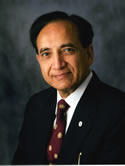First bite syndrome: Incidence, risk factors, treatment, and outcomes Journal Article
| Authors: | Linkov, G.; Morris, L. G. T.; Shah, J. P.; Kraus, D. H. |
| Article Title: | First bite syndrome: Incidence, risk factors, treatment, and outcomes |
| Abstract: | Objectives/Hypothesis: First bite syndrome (FBS) refers to facial pain characterized by a severe cramping or spasm in the parotid region with the first bite of each meal that diminishes over the next several bites.1, 2 It is a potential sequela of surgery involving the infratemporal fossa (ITF), parapharyngeal space (PPS), and/or deep lobe of the parotid gland. The incidence, risk factors, treatment options, and outcomes of FBS are poorly understood. We hypothesized that certain clinical and tumor variables independently predict the development of FBS. Study Design: Retrospective cohort study. Methods: We reviewed the records of 499 patients (mean age, 50 years; range, 12-81 years) undergoing surgery of the deep lobe of the parotid gland, PPS, and/or ITF between 1992 and 2010. Minimum follow-up time was 3 months (median, 39 months). Patient, tumor, and FBS characteristics were analyzed. Incidence was calculated using the Kaplan-Meier method. Univariate analyses and multivariate logistic regression were used to identify independent risk factors for FBS. Patients developing FBS were interviewed to assess the efficacy of various treatment modalities. Results: FBS developed in 45 patients (incidence, 9.6%), at a mean time of 97 (range, 6-877) days from surgery. On multivariate analysis, three variables were significant independent risk factors for FBS: sympathetic chain sacrifice (odds ratio [OR], 4.7; P =.008), PPS dissection (OR, 8.7; P =.001), and resection of only the deep lobe of the parotid gland (OR, 4.2; P =.002). FBS developed in 48.6% of patients undergoing sympathetic chain sacrifice, 22.4% of patients undergoing PPS dissection, 38.4% of patients undergoing isolated deep lobe parotid resection, and 0.8% of patients undergoing total parotidectomy. Partial resolution of FBS symptoms occurred in 69% and complete resolution in 12%. Of 45 FBS patients, 15 (33%) underwent at least one type of treatment for symptomatic relief. No treatment consistently provided effective symptomatic relief. Conclusions: The strongest independent risk factors for FBS are PPS dissection, deep lobe of parotid resection, and sympathetic chain sacrifice. Patients undergoing surgery with dissection and/or manipulation in these anatomical sites and structures should be thoroughly counseled about the risk of developing FBS. Laryngoscope, 2012 © 2012 The American Laryngological, Rhinological, and Otological Society, Inc. |
| Keywords: | adolescent; adult; child; treatment outcome; aged; aged, 80 and over; middle aged; retrospective studies; young adult; major clinical study; follow up; paraganglioma; pain; cohort studies; tumor volume; neuropathy; risk factors; feeding behavior; medical record review; retrospective study; prediction; risk assessment; postoperative complication; syndrome; multivariate analysis; clinical effectiveness; anxiety; gender; onset age; pain, postoperative; parotid neoplasms; muscle cramp; neurilemoma; infratentorial neoplasms; pleomorphic adenoma; face pain; pharyngeal neoplasms; parotidectomy; spasm; parotid gland tumor; parotid gland disease; mastication; parotid; first bite syndrome; infratemporal fossa; parapharyngeal space; horner syndrome; facial pain; parotid region |
| Journal Title: | Laryngoscope |
| Volume: | 122 |
| Issue: | 8 |
| ISSN: | 0023-852X |
| Publisher: | Wiley Blackwell |
| Date Published: | 2012-08-01 |
| Start Page: | 1773 |
| End Page: | 1778 |
| Language: | English |
| DOI: | 10.1002/lary.23372 |
| PROVIDER: | scopus |
| PUBMED: | 22573579 |
| DOI/URL: | |
| Notes: | --- - "Export Date: 4 September 2012" - "CODEN: LARYA" - "Source: Scopus" |
Altmetric
Citation Impact
BMJ Impact Analytics
Related MSK Work






